Kuinka kauan a 48 Voltin akku viimeinen?
Kun suunnittelet kodin energian varastointijärjestelmää, erityisesti aurinko- tai varmuuskopiointivoiman kannalta, 48 voltin alusta on suosittu ja tehokas standardi. Keskeinen kysymys, joka luonnollisesti syntyy, on, "Kuinka kauan 48 V: n akku todella kestää?" Vastaus ei ole pelkästään jännitteessä; Sen määrää akun kapasiteetti ja miten käytät sitä.
48 V: n akun käyttöaika riippuu täysin vahvistimestaan (Ah) tai kilowatti tunti (kWh) kapasiteetti ja tehokkuus (watteina) laitteista, joita olet käynnissä. Suurempi kapasiteetti akku, kuin 48 V 200AH -yksikkö, kestää kaksi kertaa niin kauan kuin 48 V 100AH -yksikkö saman kuorman alla. Nykyaikaiset 48 V: n seinällä asennetut akkujärjestelmät tekevät tarpeistasi oikean kapasiteetin valitsemisen helpon.
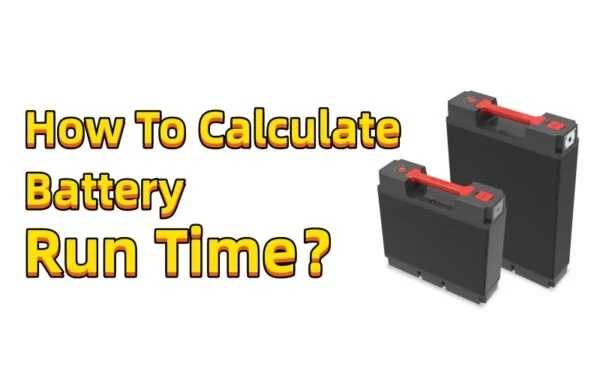
klo Gycx aurinko, Olemme erikoistuneet 48 V: n energiajärjestelmien suunnitteluun, jotka tarjoavat luotettavia, kestävä voima. Hajautetaan, kuinka laskea ajonaika ja vastata muihin kriittisiin kysymyksiin näistä voimakkaista paristoista.
Kuinka monta aurinkopaneelia minun on ladattava 48 V 100AH -akku?
48 V 100AH -akun yhdistäminen aurinkopaneeleilla on avain todelliseen energian riippumattomuuteen. Mutta miten koot aurinkoaryhmäsi varmistaaksesi, että akku saa täyden latauksen joka päivä?
Luotettavasti ladata a 48Vuonna 100Ah (joka on 4.8 kWh) akku tyypillisenä päivänä, tarvitset yleensä aurinkopaneeliryhmän suunnilleen 1.5 kw 2.5 kW. Tämä tarkoittaa noin 4 to 6 moderni, Korkean tehokkuuden 400W aurinkopaneelit. Tarkka numero riippuu tietystä sijainnistasi, vuoden aika, ja paikalliset sääkuviot.
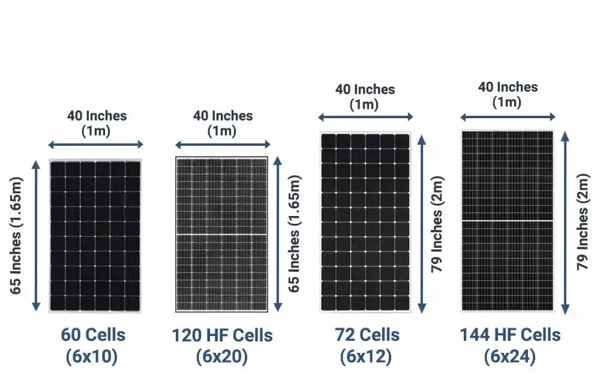
Sukeltaa syvemmälle: Eri alueellinen ilmasto
Näin määrittelemme oikean aurinkoaryhmän koon:
- Energia täydentää: 48 V 100AH LFP (Litiumrautafosfaatti) Akkuvarastot 4.8 KWh Energian. Ladata se täysin päivittäin, Sinun on luotava tämä määrä plus vähän ylimääräistä kattamaan järjestelmän menetykset.
- Aurinko -tuntia (Psh): Tämä on ratkaiseva tekijä, joka vaihtelee kauden mukaan. Japanissa, Saatat päästä yli 4.5 Psh kesällä, mutta vain 2.5-3 Psh selkeänä päivänä talvella. Suunnittelemme järjestelmiä, jotka perustuvat konservatiiviseen keskiarvoon (ESIM., 3.5 - 4 Psh) varmistaa luotettava lataus suurimman osan vuodesta.
- Järjestelmätappiot: Me otetaan huomioon paneelin lämmön takia menetetty energia, johdotus, ja MPPT -varausohjaimen tehokkuus (tyypillisesti 15-25% kokonaishäviö).
- Laskelma:
- Vaadittu aurinkoenergia (kW) = Tarvitaan energiaa (kWh) / (Aurinko -tuntia x -tehokkuuskerroin)
- Esimerkki:
4.8 kWh / (3.5 hours x 0.80 efficiency) = 1.7 kW (1700 Watts) - Tämä tarkoittaisi
1700W / 400W per panel ≈ 4 to 5 panels. Suosittelemme usein ylimääräistä paneelia puskurin tarjoamiseksi pilvistä päivinä.
Tämä varovainen, Sijaintikohtainen koko varmistaa.
Mikä on 100AH 48 V: n litiumakun varmuuskopiointiaika?
Katsotaanpa. Sinulla on 100AH 48 V litium -akku. Kuinka monta tuntia varmuuskopiovoimaa voit todella odottaa siitä sähkökatkoksen aikana?
A 100AH 48 V litiumakku tarjoaa yhteensä 4,800 wattituntia (Heila) tai 4.8 kilowattitunnit (kWh) energian varastointi. Varmuuskopiointi on tämä kokonaisenergia jaettuna laitteesi virrankulutuksella. Esimerkiksi, se voisi ajaa a 480-wattia ladata noin 10 tuntia tai kevyempi 200-wattia kuormittaa jtk 24 tuntia.
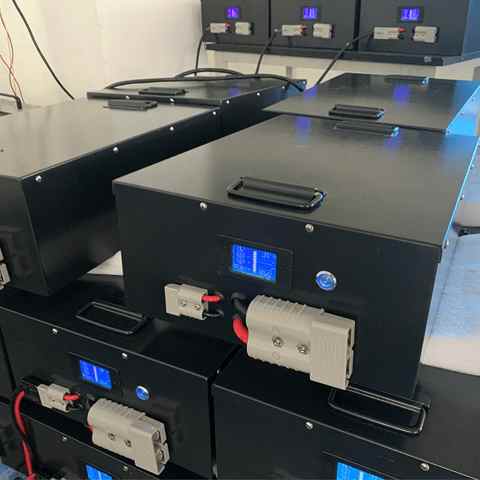
Sukeltaa syvemmälle: Varmuuskopiointiajan laskeminen
Tässä on yksinkertainen matematiikka:
Ajonaika (Tuntia) = Kokonaisenergia (Heila) / Kuormitus (Wattia)
Katsotaanpa joitain kodin käytännön skenaarioita:
- Skenaario 1: Välttämättömät kuormat (noin. 300W): Katkoksen aikana, Käytät tehokasta jääkaappia, useita LED -valoja, Internet -reititin päivitykset, ja puhelimien lataaminen.
4,800 Wh / 300 W = 16 hours
- Skenaario 2: Kohtalaiset kuormat (noin. 800W): Lisäät television ja riisikeittimen välttämättömyyteen.
4,800 Wh / 800 W = 6 hours
Siksi moderni 48v Seinälle asennettava akku Järjestelmät ovat niin suosittuja. Yksi 4,8 kWh -moduuli tarjoaa erinomaisen varmuuskopion välttämättömyydelle. Ja koska ne ovat modulaarisia, Voit helposti lisätä toisen yksikön kaksinkertaistaaksesi varmuuskopioajan suuremman mielenrauhan saavuttamiseksi. Gycx Solarissa, Autamme sinua suorittamaan kuormitusanalyysin varmistaaksesi, että saat odotettavan varmuuskopiointiajan.
Menetkö litiumparistot huonosti istumisesta?
Entä jos sinulla on akkujärjestelmä, mutta älä käytä sitä jonkin aikaa? Voiko litium -akku mennä huonosti vain istumisesta varastossa, käyttämätön?
Kaikki paristot, mukaan lukien litium-ioni, huononee hitaasti ajan myötä, vaikka sitä ei käytetä. Tätä kutsutaan kalenterin ikääntyminen. kuitenkin, moderni LFP (Litiumrautafosfaatti) Paristot ovat poikkeuksellisen vakaita. Heillä on myös erittäin matala itsepurkautumisnopeus (1-3% kuukaudessa), tarkoittaen, että he menettävät hyvin vähän latausta istuessaan. Avain varaston pitkän käyttöiän varmistamiseen on pitää ne a viileä paikka aassa osittainen varaustila (noin 40-60%).
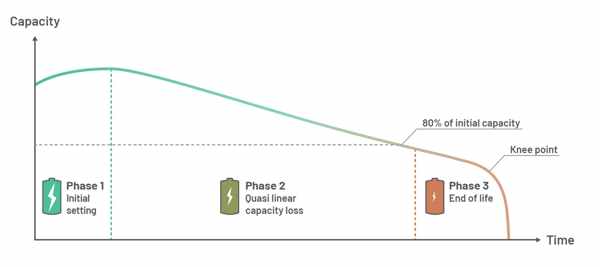
Sukeltaa syvemmälle: Kalenterin ikääntyminen vs.. Itsensä puristaminen
On tärkeää tietää kaksi tapaa, jolla akku ikääntyy tyhjäkäynnillä:
- Itsensä puristaminen: Tämä on väliaikainen ja hidas varaushäiriö. Voit yksinkertaisesti ladata akun palauttaaksesi sen. LFP -paristojen alhainen määrä tarkoittaa, että voit varastoida niitä yli vuoden ajan ja ne säilyttävät silti merkittävän latauksen.
- Kalenterin ikääntyminen: Tämä on pysyvä, peruuttamaton kapasiteetin menetys, joka tapahtuu vuosien varrella, käytöstä riippumatta. Tämän prosessin nopeuteen vaikuttavat suuresti kaksi tekijää:
- Lämpötila: Lämpö on suurin vihollinen. Kuumaan ympäristöön varastoitu akku ikenee paljon nopeammin kuin viileään varastoitu, ilmasto-ohjattu tila.
- Maksutila: Pitkäaikaista varastointia varten, pitämällä litiumakku 100% Täysi aiheuttaa stressiä soluihinsa ja kiihdyttää ikääntymistä. Sen säilyttäminen 0% on myös vaarallinen. A 40-60% lataus on ihanteellinen matala stressitila varastointiin.
Oikein varastoitu LFP -akku voi istua erittäin pitkään ja pysyä terveenä ja valmiina huoltoon.
Voiko litium -akku syttyä, kun ei latausta?
Akun turvallisuus on tärkein näkökohta. Kuulemme usein lataamiseen liittyvistä tulipaloista, mutta voi korkealaatuista litiumparisto1, Kuten yksi kodin säilytysjärjestelmässä, Tule tuleen, kun se vain istuu siellä, Ei latausta tai purkamista?
Se on erittäin harvinainen korkealaatuiseksi, vahingoittumaton litium -akku spontaanisti, kun sitä ei käytetä. Tällainen tapahtuma vaatisi melkein varmasti olemassa olevaa sisäinen oikosulku, joka johtuu tyypillisesti joko a valmistusvirhe tai Aikaisemmat fyysiset vauriot akulle. Siksi hyvämaineisten valmistajien paristojen valitseminen, jolla on tiukka laadunvalvonta ja turvallinen kemia, kuten LFP on niin kriittinen.
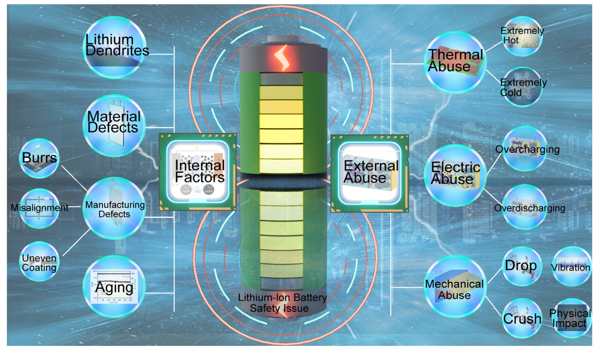
Sukeltaa syvemmälle: Riskin ymmärtäminen ja lieventäminen
Tässä on erittely tästä keskeisestä turvallisuusaiheesta:
- Syy (Sisäinen oikosulku): Akkukennon sisällä ovat erittäin ohut positiivisen ja negatiivisen materiaalin kerrokset, jotka on erotettu erottimella. Tulipalo voi alkaa, jos nämä kerrokset koskettavat. Tämä voi johtua mikroskooppisesta valmistusvirheestä tai jos akku pudotettiin, holhota, tai puhkaistu, aiheuttaen sisäisiä vaurioita.
- Laadunvalvonnan rooli: Hyvämaineiset akkuvalmistajat investoivat voimakkaasti puhtaan huoneen valmistukseen ja monivaiheiseen testaukseen (mukaan lukien röntgen- ja ikääntymistestit) Potentiaalisten vikojen solujen havaitsemiseksi ja seulomiseksi. Tämä on ensimmäinen ja tärkein puolustuslinja.
- LFP: n turvallisuusetu: Tämä on ratkaisevan tärkeää. LFP (Litiumrautafosfaatti) Kemia on luonnostaan paljon kemiallisempi ja lämpö stabiilia kuin muut litium-ionityypit (Kuten puhelimista ja kannettavista tietokoneista löytyvät NMC tai LCO). Vaikka LFP -solu epäonnistuisi, se on paljon todennäköisemmin tuulettaa savua ja epäonnistuu turvallisesti sen sijaan, että purkaisi väkivaltaiseen tuleen.
- Suojajärjestelmän merkitys: Ammattilainen 48v Seinälle asennettava akku ei ole vain akku; Se on bess. Vankka, Suojakotelo on suunniteltu estämään fyysiset vauriot, jotka voivat johtaa sisäiseen lyhyeen. Sisäinen BMS tarjoaa myös kerroksen jatkuvaa seurantaa.
Asiakkaidemme turvallisuus on ensisijainen tavoite. Siksi käytämme yksinomaan maailmanluokan valmistajien LFP-akkuja. Tiedämme niiden tiukan laadunvalvonnan ja LFP -kemian luontaisen turvallisuuden tarjoavat korkeimman suojan ja mielenrauhan kodin asennettuun järjestelmään.
48 V: n akku on tehokkaan ja tehokkaan energian varastointijärjestelmän selkäranka. Ymmärtäminen, kuinka kauan se kestää, on yksinkertainen laskelma sen kapasiteetin perusteella (Ah) Ja kuorma (W). Moderni 48v Seinälle asennettava akku järjestelmät, Rakennettu turvallisella ja kestävällä LFP-tekniikalla, antaa luotettava, alhainen hallussapito, ja pitkäaikainen ratkaisu energian riippumattomuuteen ja varmuuskopiointivoimaan.
Jos sinulla on kysyttävää 48 V: n akkujärjestelmän suunnittelusta, Aurinkokoneen kokoaminen, tai haluat tutkia kodin turvallisimpia ja luotettavimpia akkaratkaisuja, Gycx Solarin asiantuntijatiimimme on täällä auttamassa. Ota yhteyttä ammatilliseen kuulemiseen! GycxSolar toivottaa neuvottelun tervetulleeksi, Asiantuntijamme antavat sinulle oikea -aikaisen ja tyydyttävän ratkaisun.
Litiumparistojen riskien tutkiminen voi auttaa sinua tekemään tietoisia päätöksiä niiden käytöstä ja varastoinnista. ↩
